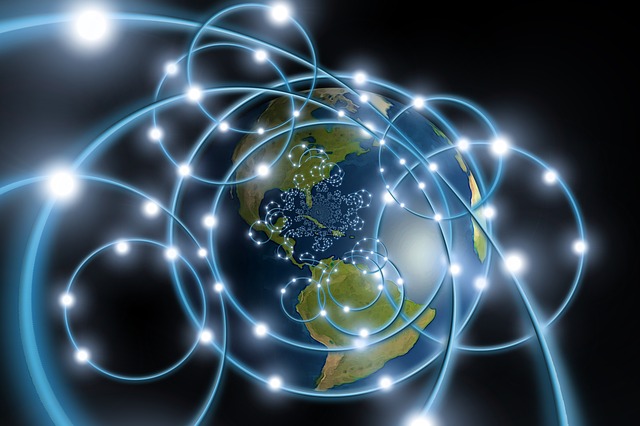The world has changed dramatically since the Industrial Revolution. The modern workforce is no longer tethered to a single place of work and instead has access to a variety of tools, platforms, and technology that allows them to be more productive and efficient. In reaction to the pandemic, companies took a variety of responses, including restructuring, reducing pay and benefits, and implementing a flexible work paradigm, which was validated by the results of the WtW 2021 Employee Experience Survey. Numerous firms experienced losses in productivity, engagement, and wellbeing as a result of these activities, among other negative effects on people and the economy.
The modern worker experience is a new and growing industry with many different platforms for people to find, use and enjoy. The modern employee experience (MEF or MEE) is generally the way a business treats their employees in how they interact with them and the product they provide. Some companies are providing video conferencing spaces, mobile devices, and iPads while others are offering snacks, coffee, and other refreshments snacks available throughout the day. All these things contribute to creating happier employees who remain more focused on the work that needs to be done instead of worrying about their personal needs.
Since many jobs today require workers to use their phones while they are at work (or on the go), there are a lot of benefits when it comes to mobile device usage in the workplace. With the right apps, users can achieve various things such as faster communication among employees or even better collaboration between departments within your organization. Here we will go over some of these apps so you can see how they can help improve your productivity:
The mobile worker experience
The modern worker is always connected, mobile, and enabled to work from anywhere. The ability to be productive in any location has become a necessity for businesses that have to maintain business continuity during crises such as downsizing and reorganization.
To accommodate their needs, companies should consider cloud-based workspaces as part of their overall workplace strategy. These solutions allow employees access from any device they desire while maintaining security protocols that prevent unauthorized access or interference with company information stores (such as customer databases). Additionally, telecommuting options can help reduce costs associated with office space rentals while still allowing employees flexibility when it comes time for them to return home after work hours or on weekends.
Making work collaborative
According to the Gartner Digital Worker Experience Survey, Nearly 80% of employees will use collaboration tools for work in 2021, up from just over 50% in 2019. This represents a 44% increase since the outbreak started. Particularly, during the epidemic, the utilization of meeting solutions increased. While employees worldwide reported spending 63% of their meeting time in person on average in 2019, that percentage fell to 33% by 2021 as more meetings were held via audio and video-enabled meeting solutions. It is anticipated that the trend away from in-person meetings will continue. Because of remote work and shifting worker demographics, Gartner projects that by 2024, in-person meetings would account for only 25% of workplace meetings, down from 60% now.
Business continuity is key to ensuring smooth operations in any organization—and it's no different at your company. The best way to ensure business continuity is through proper data collection so that you can respond quickly when something happens. If there are no servers available at the moment when an incident occurs (for example), then there will be delays in getting information out about what happened or who was affected by it—which could cost more money than just having enough servers available all along!
Unified Communications and how they are being used today
Unified Communications (UC) is the integration of multiple communication methods into a single solution. UC can be used for voice, video, and collaboration; it provides users with the ability to use audio, video, chat, and more from one application.
UC integrates communication methods in real-time so that users don't have to switch between applications or devices when communicating with others. This saves time and improves productivity because workers don't need to leave their desktops just because they want to send an email or update their status on Facebook—they can do it all from within a single application!
Maintaining business continuity in situations of crisis and downsizing
Maintaining business continuity in situations of crisis and downsizing is an important part of any successful company. Business continuity plans are designed to ensure that your employees can continue working, even if some or all of your employees get laid off or transferred due to a merger, acquisition, or downsizing.
The first step in implementing a business continuity plan is creating a team of members who will be responsible for implementing the plan once it has been approved by management and approved by legal counsel. Your team should include individuals from different departments within your organization (such as human resources and IT), as well as specialized consultants from outside sources who may be able to share their knowledge about how best practices might help you prepare for potential crises like layoffs or mergers/acquisitions involving two or more companies within your industry sector.[1]
Reimagine your workspace with Cloud-Based Workspaces
Cloud-based workspaces are the future of the workplace and they allow employees to work anywhere, anytime. Cloud-based workspaces can be accessed by any device and provide flexibility for users who want to access their files from home or on another device. With these benefits, it's no wonder that more businesses are choosing cloud-based workspaces over traditional office environments.
Cloud-based workspaces have several advantages compared with traditional physical offices:
- They're more cost-effective because they don't need as much space or equipment as an actual office would require (and therefore less expensive).
- They're easier to maintain because all data is stored in one location instead of being scattered across multiple locations around town (which means fewer IT staff members are needed).
The modern workplace is always changing. Stay up to date with new technology
The modern workplace is always changing. Stay up to date with new technology, trends, and changes in the workplace.
- Be aware of new trends in the workplace.
- Stay up to date with technology.
- Understand how employees work by observing them and listening to them talk about their jobs or personal lives at home. This can help you understand what they need from their job, which will help you give them better opportunities for growth within your organization or department (e-learning courses).
- Look for ways to improve the workplace by asking yourself these questions: What could we do better? Are there any areas where we could improve upon our processes? How does this affect others working here?
Workers and employers need to understand each other. The modern workforce is increasingly diverse and mobile, with people working at home or in remote locations, and they are often dealing with a range of technology that is not familiar to them. Some companies are changing the way they do business to be more accommodating of these new realities. The most important thing for any workplace to do is to create an environment where employees feel comfortable and safe. This can be done by making sure that there are enough toilets available, that there are no distractions while you work (no loud music playing, no windows open), and by providing a nice space for working (lighting, furniture).
There are also things that you can do as an employee so that your workplace does not make you uncomfortable. For example: if there is noise at night (like construction) then bring earplugs; if there are too many people in one location then find another room where it's quieter; if your boss makes fun of you for being tired then tell him/her about how tired you are! These actions will make sure everyone feels good about working together in this new era of technology
Conclusion
We’ve come a long way since the days of the office typewriter and computer. Today, we’re more connected than ever before. We can do our work from home, on our schedule. We have more control over our time, but we also have less control over what happens during that time. With all this freedom comes a lot of responsibility and expectations when it comes to how well you handle your job responsibilities as well as how much flexibility you give yourself while working remotely (or not).
With this in mind, let's take a look at some trends that will impact today's workers:
- More millennials will transition into the workforce later in life than previous generations did and be better prepared for it.
- Technology will continue to change how we work and live with constant innovation every year. Among other things, this means more technology at work which increases productivity without getting distracted by distractions like phones or televisions (which may be important but are often distracting nonetheless). This also means having access to resources whenever needed through remote access such as screen sharing software so employees don't need to travel back home when trying something new! Plus if there's ever an emergency then everyone can be reached easily because they could always get in touch with each other electronically if necessary via email or social media channels.





